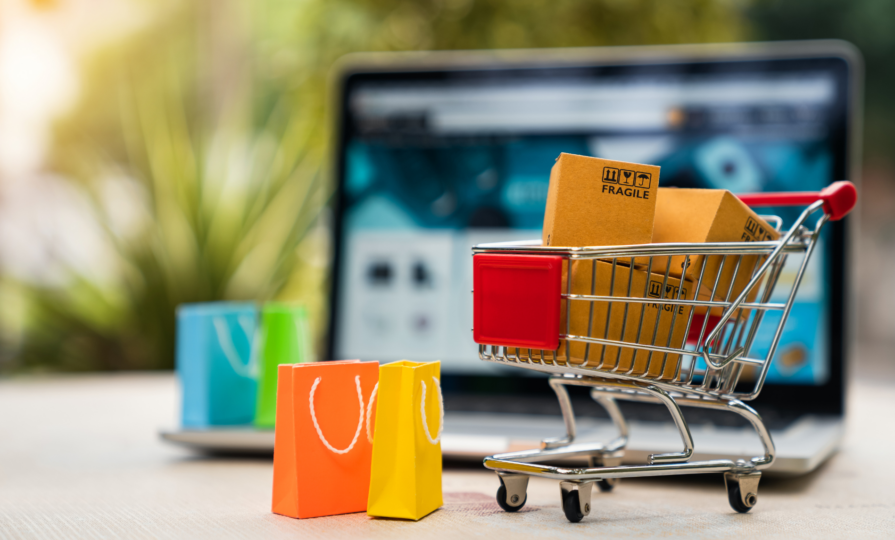The future of contactless technologies in retail
From biometric payments to AI-powered assistants and IoT-enabled inventory management, retailers have numerous tools to create a streamlined, safe, and efficient shopping experience

With contactless checkouts and touchless transactions rapidly reshaping how people shop, retailers are seeking to harness technology to improve convenience, safety, and efficiency for both consumers and employees.
The retail landscape is already saturated with innovations like mobile payment systems, QR code-based payments, and self-checkout kiosks.
However, what else lies on the horizon for contactless technology in retail?
Biometric payments and verification
While fingerprint scans and facial recognition are already used in some sectors, their potential for retail remains largely untapped.
Biometric payment systems could allow customers to make purchases with a quick scan of their face, palm, or even an iris. Giants like Amazon and Mastercard are already piloting palm-based and facial recognition payments, but there is room for these systems to expand significantly across smaller retailers and everyday settings. Biometric authentication adds a layer of security to transactions, making it harder for fraudsters to duplicate, while streamlining the checkout process.
Future advances in biometric verification could eliminate the need for payment cards and devices altogether. Customers could simply pick up items, have their biometrics verified at a checkout-free exit, and be charged automatically.
This type of seamless, “hands-free” experience would make transactions faster, reduce physical contact, and minimise the need for cash or card transactions. However, as biometric technology advances, privacy and security concerns must also be addressed to gain consumer trust.
Artificial Intelligence
AI technology is already present in many retail systems, but future developments promise a deeper level of personalization and efficiency. An example could be a store where AI-driven cameras analyse customers’ browsing patterns, using algorithms to predict what they’re likely to purchase. If someone lingers near a shelf of sneakers, AI could push a notification to their phone with a personalised discount or recommendation based on previous shopping history.
AI could also enhance contactless customer service through intelligent kiosks or virtual shopping assistants. For instance, digital kiosks could use facial recognition and purchase history to offer tailored product suggestions or guide customers to items they may like.
AI chatbots embedded in store apps could assist customers in real time as they shop, answering questions or even helping locate items on the shelves. By reducing dependency on human customer service, these AI solutions minimise contact while providing a high level of assistance.
Internet of Things (IoT) for real-time inventory
IoT technology has potential applications far beyond “smart” homes and cities. In retail, IoT-enabled smart shelves could revolutionise inventory management, eliminating out-of-stock issues and improving product visibility.
These smart shelves would be equipped with sensors to monitor stock levels, automatically updating inventory and alerting staff when items need restocking or when there is an unusual pattern that might suggest theft.
Beyond just managing inventory, IoT can also contribute to a contactless customer experience. For instance, RFID tags, already in use in some retail sectors, could evolve to automatically update shopping carts without scanning each item individually. Instead, as customers place items in their carts, RFID or similar sensors could detect them and adjust the total amount dynamically in real-time, allowing for a completely contactless checkout at the end.
Augmented reality for interactive shopping
Augmented reality (AR) is transforming the way customers interact with products, and it holds particular promise for the contactless shopping experience. AR could allow shoppers to “try on” clothes, makeup, or accessories without needing to touch the actual products.
Virtual mirrors and AR applications let customers visualise themselves in a new outfit or see how a piece of furniture might look in their living room simply by using a smartphone or tablet.
Retailers like Ikea and Sephora already employ AR in their apps, but in the future, AR could become a standard part of the in-store experience – AR-enabled kiosks could allow customers to scan any product and see a holographic, interactive display of product details, reviews, and usage instructions. This technology could further enhance contactless shopping by reducing the need for physical product handling and direct interaction with store associates.
Automated delivery
As online shopping becomes more integral to retail, innovations in autonomous delivery could drastically change how customers receive their orders. Retailers like Walmart in the United States are already exploring drone delivery for short-distance shipments, enabling contactless and speedy delivery. Autonomous delivery robots and self-driving vehicles could soon handle last-mile delivery, reducing the need for delivery personnel and limiting human interaction.
While logistical challenges and regulatory constraints currently limit these technologies, improvements in autonomous vehicle navigation and drone technology are likely to make autonomous delivery more accessible. In the future, customers might order items online and have them delivered by a drone or autonomous vehicle within hours, with contactless pickup options to ensure both speed and safety.
Virtual shopping assistants
Voice technology has gained popularity with home assistants like Amazon’s Alexa and Google Assistant, but its application in retail has yet to be fully explored.
In the future, retailers could leverage voice-activated systems to create a touch-free shopping experience. Customers could walk into a store and ask a virtual assistant to locate items, check stock levels, or answer questions about product specifications.
A voice-activated system could also streamline in-store ordering, allowing customers to place orders verbally and have products prepared for pickup without touching a screen or interacting with staff. Voice commands could also be integrated with in-store apps and kiosks to provide a completely touch-free shopping experience.
Challenges and considerations for contactless retail
While contactless technology offers a host of possibilities, retailers will still need to address challenges to ensure successful adoption. Privacy and data security are critical concerns, especially with technologies like biometric verification and AI-driven personalization. Retailers will need to ensure that customer data is protected and that ethical concerns are addressed to build trust with users.
Additionally, implementing these technologies can be costly and complex, especially for smaller retailers. However, as contactless technology becomes more mainstream, costs are likely to decrease, making these innovations more accessible.
The future of retail is shaping up to be contactless, data-driven, and increasingly autonomous. From biometric payments to AI-powered assistants and IoT-enabled inventory management, retailers have numerous tools to create a streamlined, safe, and efficient shopping experience.



